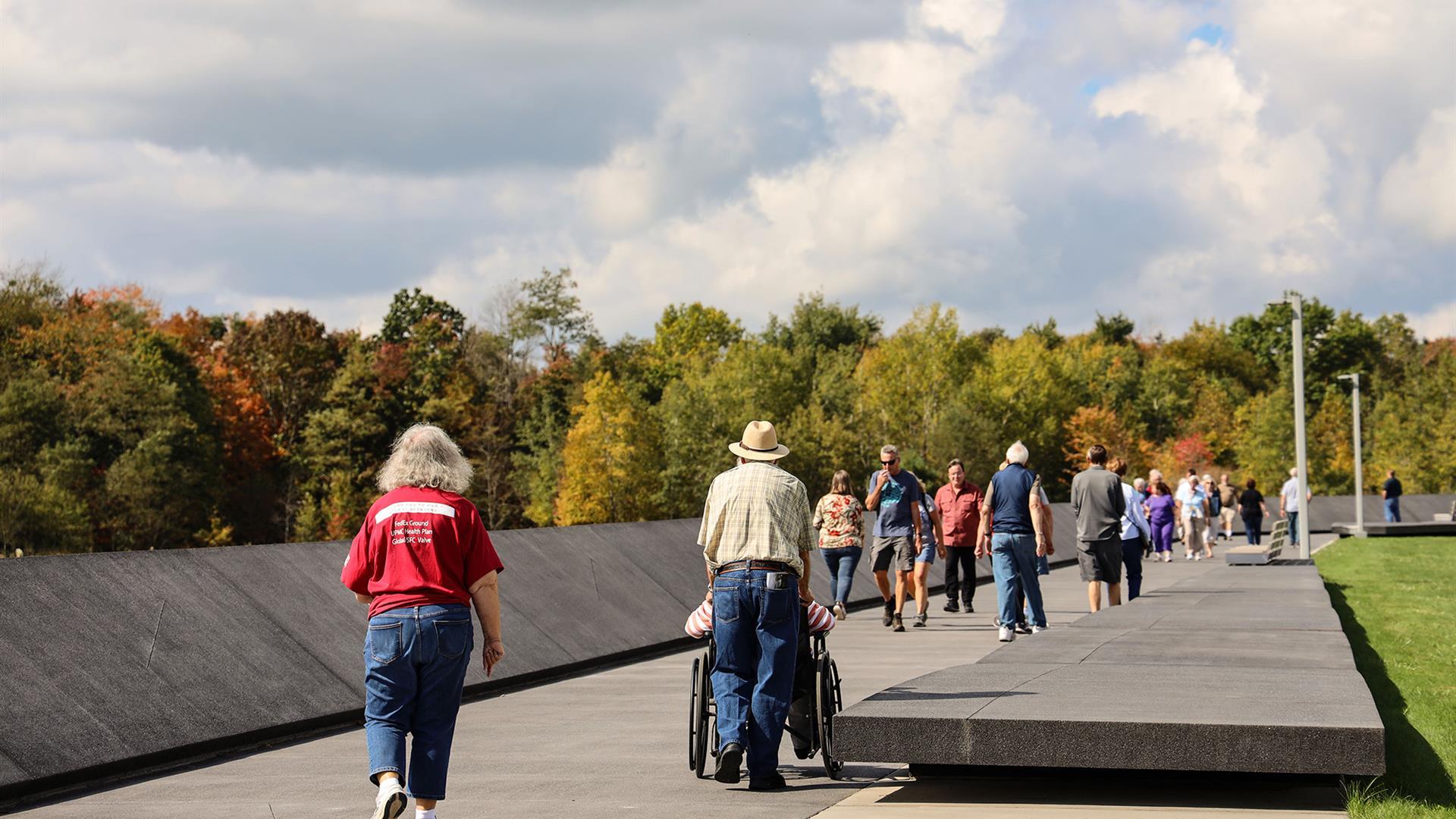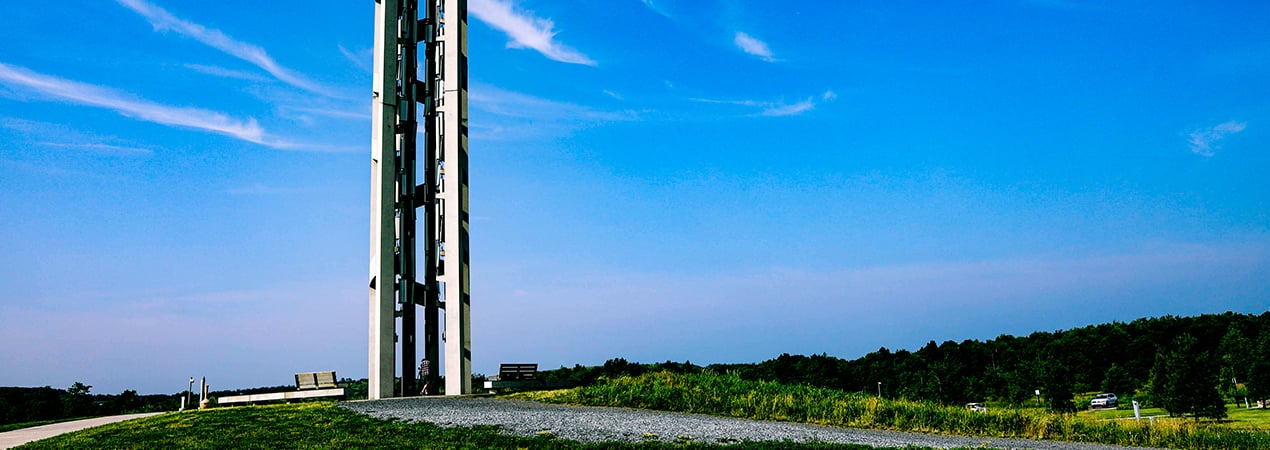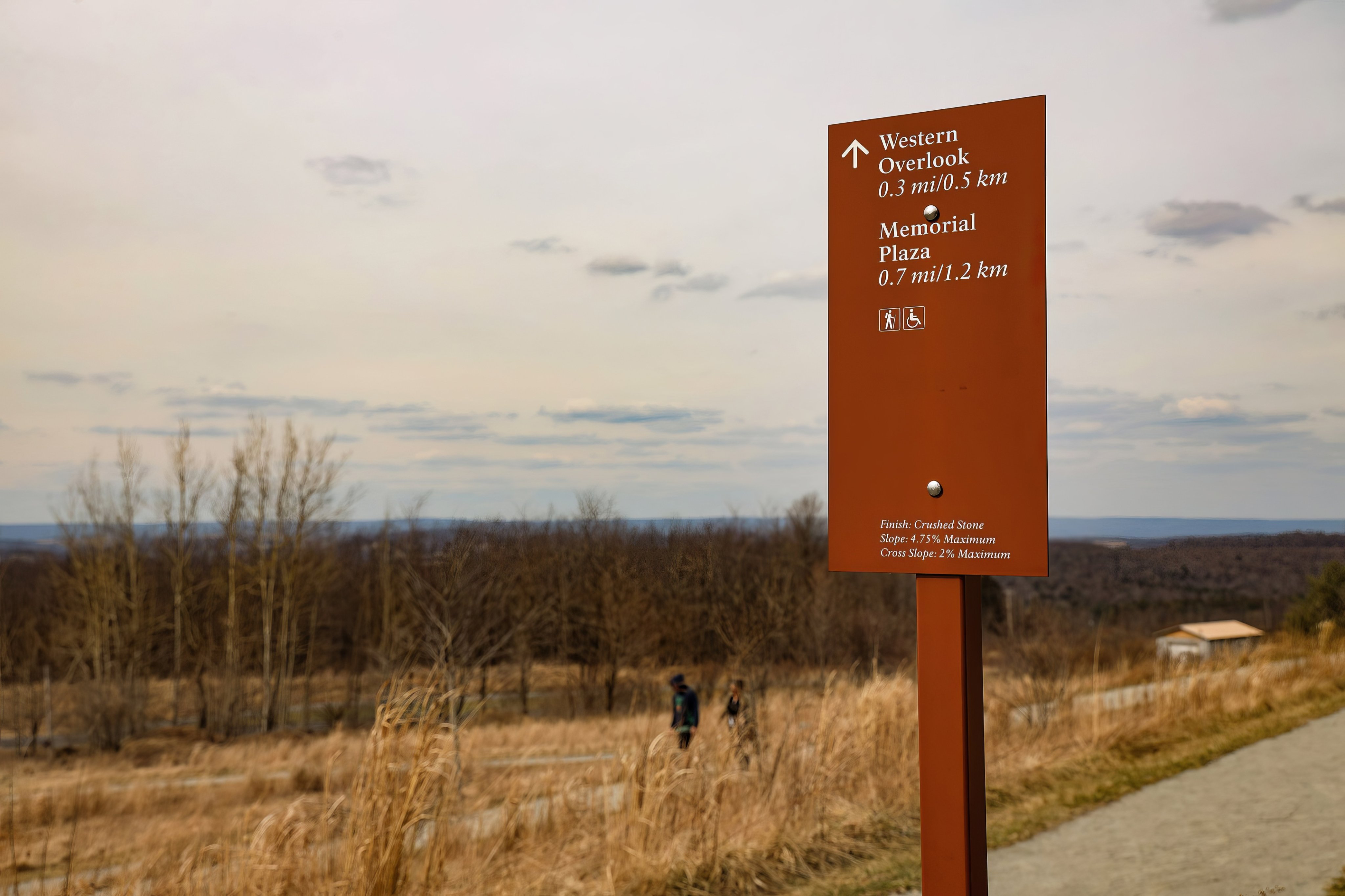Tower of Voices
Overview
The Tower of Voices serves as both a visual and audible reminder of the heroism of the 40 passengers and crew of United Flight 93. The tower is conceived as a monumental, ninety-three-feet-tall musical instrument holding 40 wind chimes, representing the 40 passengers and crew members. It is intended to be a landmark feature near the memorial entrance, visible from US Route 30/Lincoln Highway. The Tower of Voices provides a living memorial in sound to remember the 40 individuals through their ongoing voices. Funding for the design and construction of the project was provided through private donations to the National Park Foundation and the Friends of Flight 93 National Memorial.
Uniqueness of Design
There are no other chime structures like this in the world. The shape and orientation of the tower are designed to optimize air flow through the tower walls to reach the interior chime chamber. The chime system is designed using music theory to identify a mathematically developed range of frequencies needed to produce a distinct musical note associated with each chime. The applied music theory allows the sound produced by individual chimes to be musically compatible with the sound created by the other chimes in the tower. The intent is to create a set of 40 tones (voices) that can connote through consonance the serenity and nobility of the site while also through dissonance recalling the event that consecrated the site.
Tower Design Features
The tower is approximately ninety-three-feet-tall from the base to the top with some height variations. The Tower cross section is a “C” shape with a fifteen foot outside diameter and eleven foot inside diameter. The “C” shape allows sound to reflect outwardly from the open side in a fan-shaped pattern. The chimes are halted a minimum of twenty feet above the main plaza and are suspended from the interior walls of the tower up to the top.
The tower walls are constructed of precast concrete segments linked by connectors. The chimes are made of polished aluminum tubes ranging eight to sixteen inches in diameter and approximately five to ten feet in length. The size of each chime is dependent on the musical note and associated frequency that it is intended to produce. Chimes of this size and magnitude do not currently exist in the world. The chimes are wind activated and have internal strikers attached to sails projecting from the bottom of each chime.
Surrounding Landscape
The tower is located on an oval concrete plaza that is built on top of an earth mound to create an area more prominent on the landscape. The plaza includes two curved concrete benches facing the opening of the tower. The tower is surrounded by concentric rings of white pines and deciduous plantings. The concentric plantings may be interpreted as resonating “sound waves” from the tower, alluding to the auditory qualities of the chimes housed within. A direct paved path leads to the tower from the parking lot. A longer, meandering crushed stone path winds through the trees and allows visitors an alternative approach to the tower. All other landscaped areas of the project are planted with a native wildflower seed mix similar to other landscaped areas of the park. Tower of Voices Live Webcam













